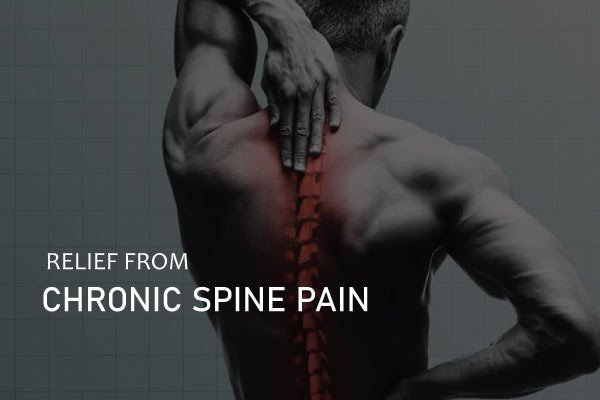Pain is a universal condition that can impact anyone at any stage of life. Whether it is the sharp sting of an hurt, the persistent ache of a ongoing condition, or the intense discomfort of a migraine, pain has a significant influence on our standard of life. Understanding how to manage this pain effectively is essential in our journey toward healing and recovery. The field of pain management has developed significantly, offering fresh insights and innovative techniques that cater to the diverse needs of individuals dealing from different types of pain.
In this exhaustive guide, we will examine the many dimensions of pain management solutions and therapies. From distinguishing between short-term and chronic pain to reviewing the latest in interventional techniques, we will delve into the study pain and the therapies that can alleviate it. We will also address holistic approaches, lifestyle changes, and cutting-edge treatments that are changing recovery and helping people reclaim their lives from pain. Whether you are in search of relief for your personal or a family member, this guide aims to provide valuable information on effective strategies for pain relief and improved quality of life.
Grasping Discomfort Relief

Pain relief is an important aspect of the healthcare system that focuses on relieving suffering and boosting well-being for patients facing different types of suffering. It encompasses a broad range of services, therapies, and practices aimed at treating both acute and chronic discomfort problems. By grasping the basic mechanisms of suffering, healthcare professionals can better adapt treatments to satisfy the specific demands of individuals, whether their pain is due to injury, illness, or various factors.
Different types of suffering require diverse management strategies. Sharp discomfort usually emerges from a specific injury or circumstance and is generally short-lived, while long-term discomfort continues over time, often lasting longer than three months, regardless of there is an active issue. Understanding these distinctions is crucial for creating effective treatment plans. Discomfort management services combine medical approaches, physical therapies, and psychological support to develop comprehensive solutions.
As the discipline of suffering management evolves, new techniques and therapies regularly emerge. From traditional methods like medications and physical therapy to new solutions like interventional procedures and regenerative medicine, there are many options available. Emphasizing a multidisciplinary approach enables practitioners to manage suffering holistically, considering not only physical symptoms but also emotional and lifestyle factors that influence an affected person's overall suffering experience.
Novel Treatments and Approaches
In the past years, innovative therapies have arisen to boost pain management and elevate patient quality of life. One notable advancement is interventional pain management, which comprises techniques such as nerve block procedures and injection therapies. These methods target specific nerves or regions of the body to deliver sustained relief from chronic pain conditions. By focusing directly on the source of pain, such methods can considerably reduce reliance on standard pain medications and their associated side effects.
Another state-of-the-art treatment gaining popularity is regenerative medicine, which comprises therapies like stem cell therapy and PRP therapies. These methods seek to tap into the body’s own healing mechanisms to repair injured tissues and alleviate pain. Particularly beneficial for issues such as osteoarthritis and tendon damage, these therapies offer a encouraging method that not only addresses pain but also promotes healing, potentially leading to sustained gains in function.
Additionally, the inclusion of tech into pain management is transforming patient care. Devices such as TENS units and neuromodulation implants deliver electrical stimulation to interfere with pain signals and improve the body’s innate pain-relief capabilities. These less invasive options are non-pharmacological alternatives that are part of a complete pain management plan, empowering patients to take control of their pain while reducing the necessity for opioid medications. With these novel therapies, the realm of pain management is transforming, providing new hope and solutions for those affected by persistent pain.
Living Style and Holistic Approaches
Integrating changes in lifestyle and wholesome approaches into pain management can significantly enhance an person's quality of life. A balanced diet rich in anti-inflammatory foods such as fresh fruits, vegetables, grains, and healthy fats can reduce overall inflammation and help alleviate pain. Maintaining a healthy weight is also essential, as excess weight can put extra strain on joints and exacerbate conditions like arthritis. Moreover, staying well-hydrated and avoiding processed foods can positively influence overall health and pain levels.
Regular physical activity is essential for pain management and can take many forms, including hiking, water exercises, yoga, and tai chi. Physical activity helps to strengthen muscles, improve mobility, and release endorphins, which can act as innate pain relievers. Finding enjoyable activities promotes consistency, making it easier to integrate exercise into daily routines. Additionally, methods such as awareness and meditation can significantly impact perceptions of pain and enhance emotional well-being, offering calm that can lower pain sensitivity.
Integrating wholesome practices such as acupuncture, massage therapy, and chiropractic care can also contribute to pain relief. These therapies address different pain generators in the body, often providing relief where traditional medicine may fall short. Many people find that a combination of these alternative treatments, alongside conventional approaches, creates a more well-rounded and effective pain management strategy. Participating in these holistic practices promotes a sense of empowerment and control over one's pain, leading to improved physical and mental health.
